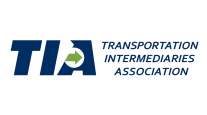Contributing Writer
Intermodal Freight Industry Ponders Investment in Resilience

[Ensure you have all the info you need in these unprecedented times. Subscribe now.]
LONG BEACH, Calif. — The intermodal freight industry is debating how much it should invest in infrastructure and other expenditures to build resiliency in the face of disruptive shocks such as the COVID-19 pandemic.
Panelists addressing the issue at the Intermodal Association of North America’s Intermodal Expo here on Sept. 14 debated whether building overcapacity into the system will sacrifice efficiency in the face of trucking’s competitive threat.
“Our whole collective endeavor here is really designed to have the intermodal product be as competitive as possible in the truck,” said Adriene Bailey, partner of surface transportation at the Oliver Wyman consulting firm, and the panel’s moderator.
The industry problem with chassis availability for trucks to move containers left panelists divided on the issue’s importance and the necessary fix.

Acors (Jerry Hirsch for Transport Topics)
Duke Acors, director of strategic operations for Georgia Ports Authority, said the problem starts with too many containers sitting on the chassis for too long before unloading. That keeps the equipment out of service for days at a time. Collectively, the intermodal freight industry needs to improve turnover time.
“I am not positive that if you threw another 5,000 chassis into the pool it would make a difference,” Acors said. “The entire supply chain needs to be evaluated.”
But Mike Burton, president of C&K Trucking, said the industry’s inability to smoothly absorb the increase in intermodal freight starts with not having enough of the correct types of chassis in the places needed most.
“Everything that we are focused on is what can we do to get more chassis,” Burton said. “Having to chase all over the city to find a chassis kills our productivity and causes a number of delays.”
The panelists agreed that the industry maintains sufficient resiliency for weather events, labor stoppages and the types of shocks that typically last 30-60 days.
But with the pandemic and subsequent unexpected surge of freight moving through the nation’s ports, “we are now going out a year, 14 months or so that we have struggled. Every stakeholder is struggling, and no one is happy with their service,” said Jay Strongosky, director of international sales at CSX Transportation.
At the start of the pandemic, companies moved quickly to slash staff, fearing a deep recession. But when freight volume exploded, they found themselves badly understaffed and are now working on expanding hiring, he said.
CSX, for example, has hired 300 conductors this year, more than it hired in the past two years combined.
Historically, the Georgia Ports Authority has tried to be prepared for swings in business by pegging its capacity at 20% above demand, Acors said.
“Well, last year we grew on 20%, so we are going to have to reevaluate,” Acors said.
The port is speeding up infrastructure projects and has one that will increase twenty foot-equivalent unit (TEU) capacity by 650,000 at its Savannah facility, he said.

Burton (Jerry Hirsch for Transport Topics)
The panelist said these types of improvements are safe, as they will help satisfy increased demand, whether it happens in a year or over a longer period.
The question, said Burton, is whether the industry needs to take an approach similar to UPS Inc., which starts stockpiling equipment well ahead of the holiday shopping season so that it won’t be caught flatfooted.
Such an approach devotes capital to rainy day capacity. But the pandemic and freight boom are far different than a recurring busy season or periodic weather event, Burton said.
“The pandemic is like a 100-year flood. As a group, we are not solving it. Customers are not happy across the board. We are broken, and I don’t know that we can fix it,” he said.
Want more news? Listen to today's daily briefing below or go here for more info:




